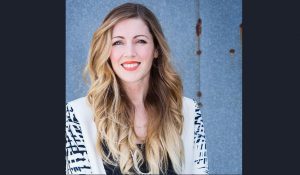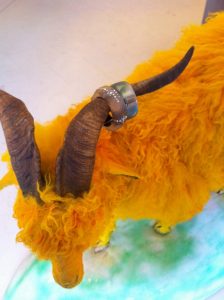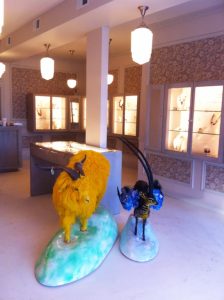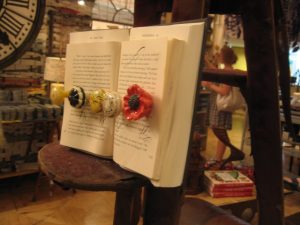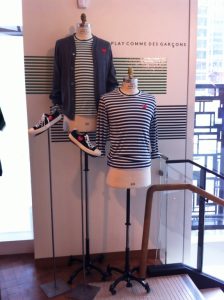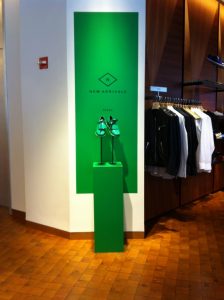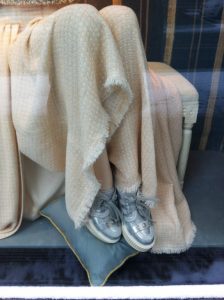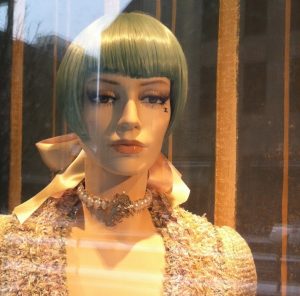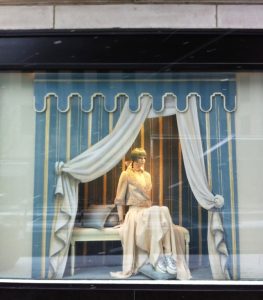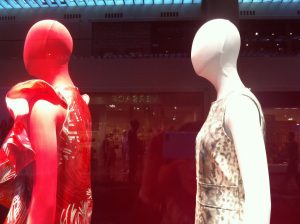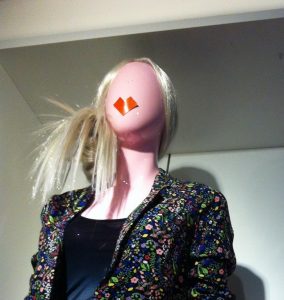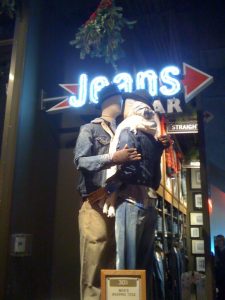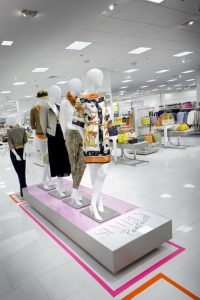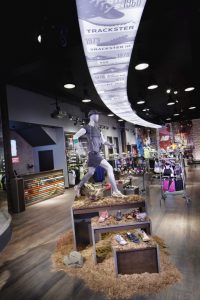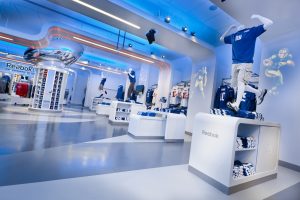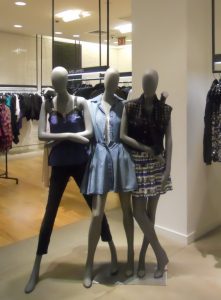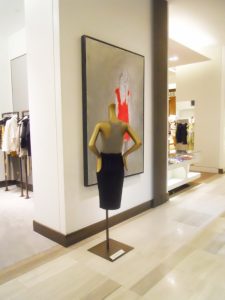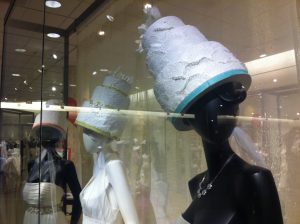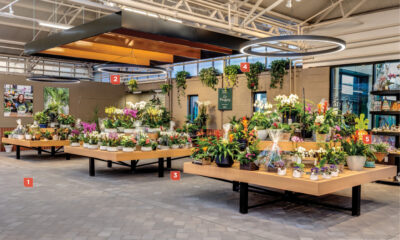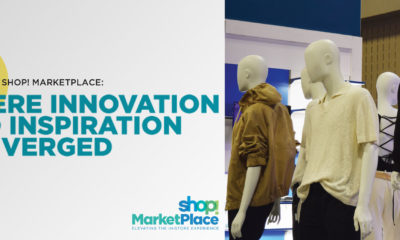Frosting comes in countless flavors. Retailers are constantly “mixing” the recipe of design, using these visual goodies to entice customers in a variety of mouthwatering ways. In this report props and mannequins are engaged in both high end and budget-friendly applications. So let’s step into the bakery of visual merchandising where the cake is sweet and the icing is sweeter.
Juicy Couture (St. Arleta, Calif.) has been using deer heads to display jewelry on horns for a while now. Alexis Bittar’s shop in Chicago took it one step further, using life-size stuffed sheep to display bracelets with fur dipped in delectable shades of saturated banana.
Barneys (New York) takes its visual cue directly from designers: Color is the prop in its Chicago store, as a green Prada Kilte shoe is seamlessly camouflaged against a green wall, fixture and backdrop. The color is so succulent it looks good enough to eat.
Customers want to buy beautiful things placed in front of them and retailers understand this. Props become product — props so gorgeous and lifestyle-centric to the customer that they must have it — now.
Both J. Crew (New York) and Kate Spade (New York) use books as risers or feature a “lifestyle” book next to coordinating product. The result? I want the book!
Beyond books and simple replaceable props, I was pleasantly surprised when a millinery head at Jonathan Adler in Chicago had a price tag. I can see this trend extending to fixtures as well. Why shouldn’t props and fixtures look so good and be so unique that they can be brought home and cycled into the customer’s existing decor?
Visual for sale is all about wardrobing her whole life, every niche.
It’s interesting what retailers are doing to existing mannequins to keep them fresh with creative and branded visual merchandising. Mannequins in recent years are expressing fun and showing movement. Dancing, playing, swooning, gazing at art and emulating human characteristics as never before. Their bodies are molded after real people and can instantly be updated with wigs, colors and facial features accomplished with makeup, beauty marks and masks.
For example, a simple positioning of the mannequins at Bloomingdales in New York shows them engaged in conversation, telling a story. Chanel’s (Paris) windows in Chicago have featured mannequins in exquisite gowns with unexpected sneakers as the “chic-y” surprise. In Dallas, Gucci (Florence, Italy) covered entire mannequins head to toe in colorful hosiery, while H&M (Stockholm, Sweden) has used red tape to create temporary lips on its mannequins’ faces. A simple deletion in the windows is noted in Derek Lam’s handless mannequins, showcasing the designer’s DNA. Look beyond the big picture.
Customers have endless selection and ways to shop. Visual merchandising is the icing of little sweet extras that turn a normal shopping experience into a bakery of delight.
Faith Bartrug of FBD Studios (Columbus, Ohio) has more than a decade of experience in transforming national brands. Her background includes brand strategy, environmental design and visual merchandising, and she has been able to practice what she preaches with leading design firms and clients such as Neiman Marcus, JCPenney and Mark Pi’s.
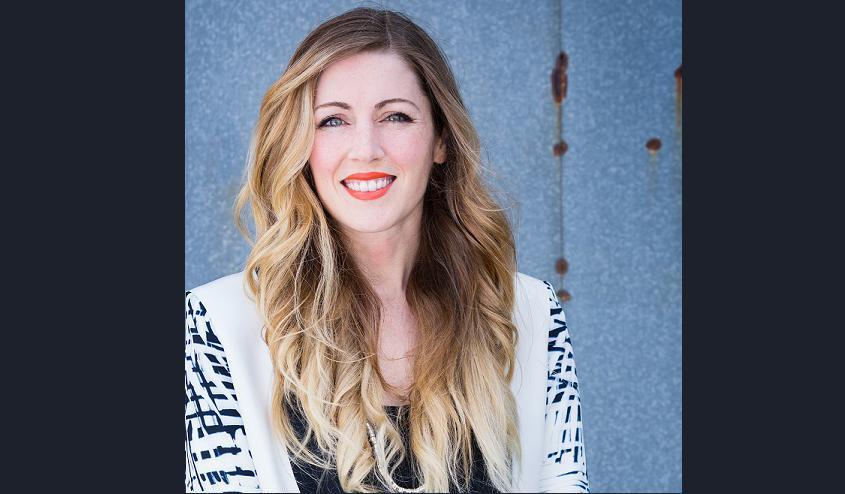
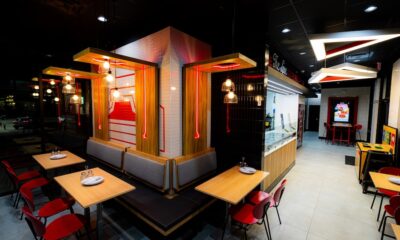
 Headlines1 week ago
Headlines1 week ago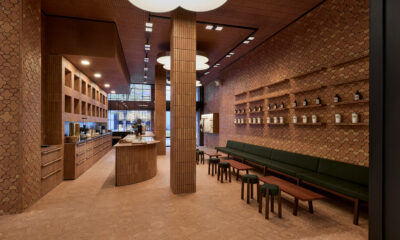
 John Ryan2 weeks ago
John Ryan2 weeks ago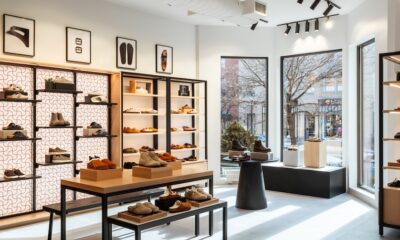
 Headlines1 week ago
Headlines1 week ago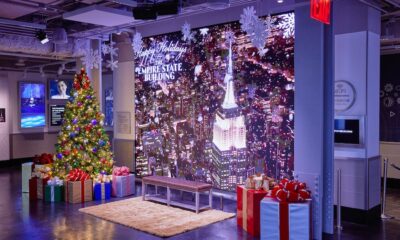
 Headlines1 week ago
Headlines1 week ago
 Hospitality2 weeks ago
Hospitality2 weeks ago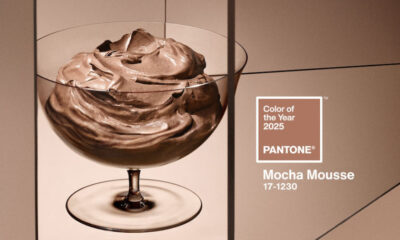
 Headlines5 days ago
Headlines5 days ago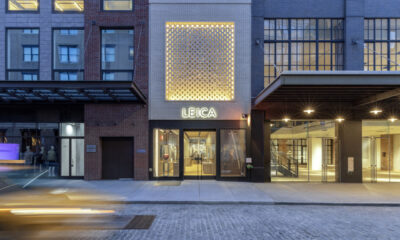
 Retail Buzz1 day ago
Retail Buzz1 day ago
 Headlines1 week ago
Headlines1 week ago
